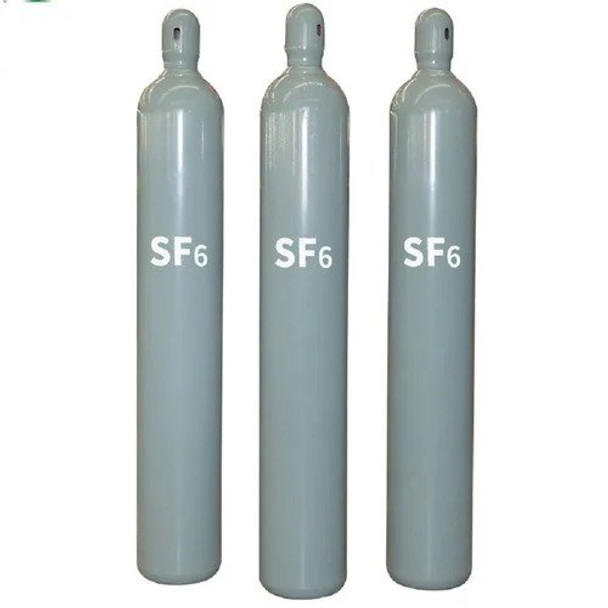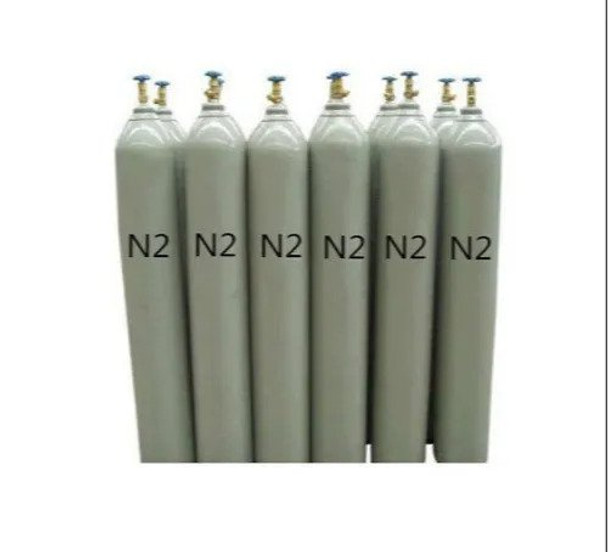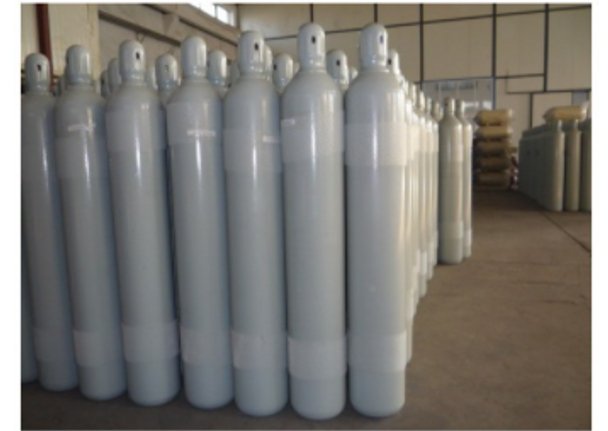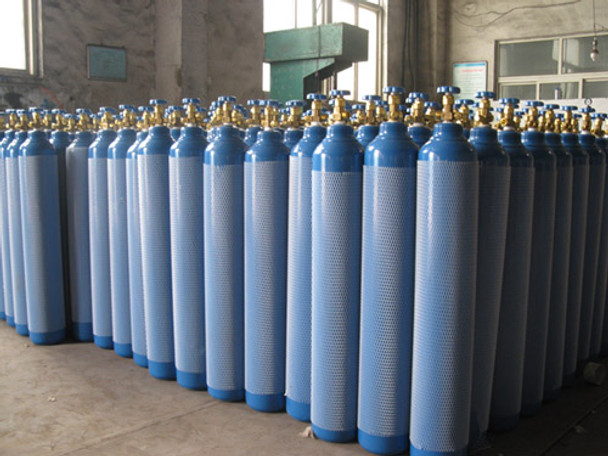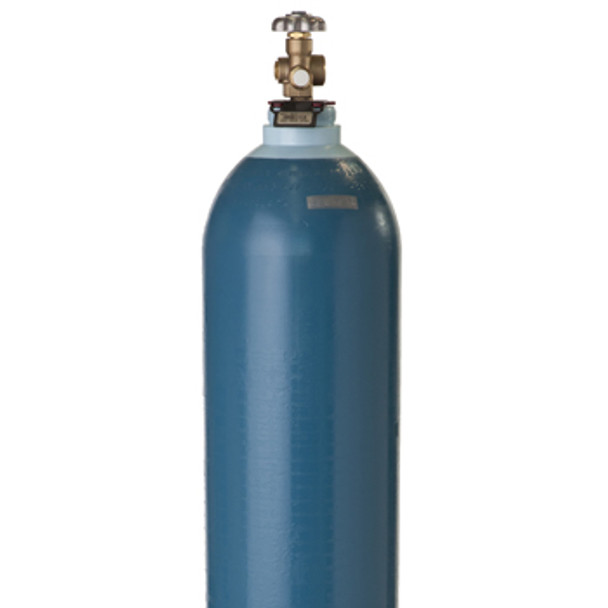Industrial Gases in Nigeria 2024 Reviews
Industrial gases encompass a large number of products that are gaseous at room temperature and pressure, and while they may actually be stored as a liquid or solid, they are commonly used in gaseous form. From a more scientific perspective, a gas is a state of matter without a prescribed shape or volume. Gases have unique properties and characteristics depending upon such variables as the temperature, pressure, and volume to which they are subjected.
Industrial gases are used in a wide range of industries, which include oil and gas, petrochemicals, chemicals, power, mining, steelmaking, metals, environmental protection, medicine, pharmaceuticals, biotechnology, food, water, fertilizers, nuclear power, electronics and aerospace. Industrial gas is sold to other industrial enterprises; typically comprising large orders to corporate industrial clients, covering a size range from building a process facility or pipeline down to cylinder gas supply.
Hellog Sf6 Gas, 50kg Cylinder
Best Industrial Gases in Nigeria 2024 Review
-
Argon Gas:
Argon (Ar) is a colourless, odourless, non-reactive, inert gas. In high concentrations, it has an asphyxiating effect. As argon is an atmospheric gas (0.93% vol.), it is generally sourced by separating air. A crude argon stream containing up to 5% oxygen is removed from the main air separation column and purified to produce the commercial purity grade required. Argon can also be recovered from the exhaust streams of certain ammonia plants.
Industrial Application of Argon Gas
Argon has many different applications in many industries. The most common one is as a shielding gas for arc welding – either in pure form or as part of various mixtures. It is one of the main gases used in filling mixtures for incandescent (filament) lamps, phosphorescent tubes and thyratron radio tubes.
It is also used as a carrier gas in chromatography, sputtering, plasma etching and ion implantations. It provides a blanket atmosphere in crystal growth, viniculture and pharmaceutical packaging. For excimer lasers, argon is blended with fluorine and helium. As an insulation gas, argon is a popular way of improving thermal insulation in multi-pane windows.
It has many protective applications in iron, steel and heat treatment industries – particularly in the case of metals susceptible to nitriding when treated with a nitrogen-based atmosphere.
Less common applications include cryosurgery, refrigeration, decarburising of stainless steel, airbag inflation, fire extinguishing, spectroscopy, spectrometry and purging or balancing in laboratories
2. Industrial Oxygen:
Many industries use oxygen for a variety of reasons. oxygen use in glass, gasification, used in welding and fabrication operations and gas-to-liquid industries.
Industrial Application of Oxygen
Common uses of oxygen include production of steel, plastics and textiles, brazing, welding and cutting of steels and other metals, rocket propellant, oxygen therapy, and life support systems in aircraft, submarines, spaceflight and diving.
3. Nitrogen
Nitrogen gas is one of the most common elements found in the earth’s atmosphere and there are a number of industrial uses in which it applies. Amongthe elements, nitrogen ranks sixth in cosmic abundance. The atmosphere of earth consists of 75.51 percent by weight (or 78.09 percent by volume) of nitrogen; this is the principal source of nitrogen for commerce and industry. This is because one of the most unique properties of this colourless and odourless gas is its ability to construct multiple bonds with other elements and compounds. Thus, this makes compressed nitrogen gas exceptionally versatile and it can, therefore, be used in many forms across diverse industries.
Nitrogen Gas High purity compressed, 50 liters (returnable) Cylinders
Industrial Application of Nitrogen Gas
The manufacture of nitrogen gas has countless applications, especially in the oil and gas industry. Some of the key uses of industrial nitrogen are outlined below.
1. Gas Blanketing
A critical nitrogen gas application is the blanketing of storage tanks for volatile chemical compounds. Due to its inert nature, nitrogen blanketing within storage units will keep unstable hydrocarbons from undergoing hazardous chemical reactions.
2. Nitrogen Purging
Nitrogen gas with its low reactivity can be introduced into industrial gas lines and other volatile processes to displace oxygen and other gases more prone to spontaneous combustion or oxidation. Nitrogen purging will keep manufacturing processes within stable and safe limits.
3. Nitrogen Injection/ Gas Lifting
As an enhanced oil recovery technique, nitrogen generated by various standard methods can be introduced into an oil reservoir when formation pressures start to dwindle. These secondary recovery techniques will restore and prolong productivity for as long as possible.
4. Gas-assisted Injection Molding
A well-known and effective method of shaping plastics involves the use of gas to manipulate the molten materials into the desired shapes. Many industrial operators incorporate a nitrogen manufacturing process in their plastic casting procedure. The use of nitrogen in place of traditional molding methods, produces even, well-crafted products with minimal filling errors/ defects.
4. Helium Gas
Helium is naturally available in gaseous fields of several types. It is mainly recovered as a by-product during the extraction and treatment of natural gas. The helium content of natural gas must be greater than 0.3% for extraction to be economically viable. Helium is abundant and its resources are estimated to be more than 100 years long at the current rate of consumption. However, due to a lack of production capacity, the market has been affected by several shortages in recent years.
Industrial Application of Helium
There are many uses of helium. Of course, it is used to fill party balloons that delight children and adults around the world. Helium replaced hydrogen in airships, after hydrogen was found to be highly reactive. Helium is used for medicine, scientific research, arc welding, refrigeration, gas for aircraft, coolant for nuclear reactors, cryogenic research and detecting gas leaks. It is used for its cooling properties because of its boiling point being close to absolute zero. This makes it attractive for use in superconductors. Helium is also used for pressurizing rockets and other spacecraft. It is also used as a heat-transfer agent.
Helium also plays an important role in vehicle safety. It is used to fill airbags if a vehicle crashes.Helium is stored and shipped in liquid form, and it is extremely cold. Its lack of reactivity makes it ideal for protective environments. Do not ever handle helium directly. It is so incredibly cold that it can cause dangerous frostbite.
5. Acetylene Gas
Acetylene is a colorless gas that has a strong garlic-like odor. When combined with oxygen, it becomes very hot and is classified as the hottest fuel gas. It is also the only fuel gas that can weld steel, making it the preferred choice for welders. Air Source Industries is a trusted provider of acetylene gas for a variety of commercial and industrial applications in Nigeria.
Acetylene can be produced three different ways: It can be produced by the reaction of water and calcium carbide, by partial combustion of oxygen and methane, and by passing hydrocarbons through an electric arc. To get a better understanding on how acetylene gas works, we’ll take a look at some of the most common uses of acetylene and how they are applied in various industries. Acetylene production plants produce acetylene for various industrial and commercial purposes. Acetylene gas features properties that make it an extremely useful gas in various applications and industries. Acetylene is mainly manufactured for chemical synthesis. The second most common application of acetylene is welding and cutting.
Helium gas (Returnable empty Cylinders when empty) 50 liters cylinder
Industrial Application of Acetylene Gas
Welding, Cutting, and Heat Treating
Now-a-days, it is widely used in welding, grazing and cutting. Oxy- fuel cutting or gas cutting is a welding process which uses acetylene gas. It is used for cutting and welding materials that need temperatures as high as 3,500 °C (6,330 °F). It is known for generating the hottest flame. The gas is also used as a medium for heat treating metals and other materials. Moreover, it is also used in manufacturing automotive parts and various other parts requiring high precision.
Portable Lighting
Acetylene was used during the 1800s for lighting a portable lamp known as a carbide or acetylene gas lamp. These lamps were used in homes, cars, bicycles, etc. They were also used in mines. Even cities and towns had these lamps for lightning. The lamps used calcium carbide and water to generate acetylene. The flow of acetylene is carefully monitored to manage the amount of acetylene used. The amount of acetylene used determined the intensity of the light.
Production of Chemicals
Acetylene is mostly used in chemical synthesis. It is used for making various inorganic compounds. The gas has various applications such as synthesis of certain vitamins like Vitamin A and E. Acetylene is also used for making components of perfumes, solvents, etc. It is also used in producing acetic acid, 1,4- butanediol (BDO), many acetylenic alcohols, etc. However, it must be noted that the purity levels of acetylene should be strictly adhered to while producing these chemicals and vitamins.
Making of Polyethylene Plastics
Polyethylene plastics, PVC and PVDF are made from ethylene or methane, which is a derivative of acetylene. The other method entails mixing acetylene with other chemicals or elements like chlorine, hydrochloric acid, etc. to produce different variants of plastic like PVC, PVDF, etc. These plastics are used for making several household and commercial products.
Oxygen Gas (industrial) welding gas 50 litres Returnable empty Cylinder
Physical Properties of Gases
As mentioned earlier, gases are compressible and, as such, knowledge of the pressure generated by a gas as it relates to temperature and volume are critical to any application from both a performance and safety perspective. From a performance perspective, knowledge of the boiling point and freezing point may be relevant, but the auto-ignition temperature, the minimum temperature required to ignite a gas or vapor in air without a spark or flame present, is of paramount importance.
The flammable (or explosive) range is the range of a gas or vapor concentration that will burn or explode if an ignition source is introduced. Limiting concentrations are commonly called the lower explosive or flammable limit (LEL/LFL) and the upper explosive or flammable limit (UEL/UFL).
Other properties that are relevant to particular applications include:
- Specific Volume (ft3/lb., m3/kg)
- Density of liquid at atmospheric pressure (lb./ft.3, kg/m3)
- Absolute Viscosity (lb.m/ft. s, centipoises)
- Specific Heat - cp - (Btu/lboF or cal/goC, J/kgK)
- Specific Heat Ratio - cp/cv
- Gas constant - R - (ft. lb./lboR, J/kgoC)
- Thermal Conductivity (Btu/hr. ft. oF, W/moC)
- Boiling Point - saturation pressure 14.7 psia and 760 mm Hg - (oF, oC)
- Latent Heat of Evaporation at boiling point (Btu/lb., J/kg)
- Freezing or Melting Point at 1 atm (oF, oC)
- Critical Temperature (oF, oC)
- Critical Pressure (psia, MN/m2)
- Critical Volume (ft.3/lb., m3/kg)
Gas Production Technology
Air separation plants refine air in a separation process and so allow the bulk production of nitrogen and argon in addition to oxygen - these three are often also produced as cryogenic liquid. To achieve the required low distillation temperatures, an Air Separation Unit (ASU) uses a refrigeration cycle that operates by means of the Joule–Thomson effect. In addition to the main air gases, air separation is also the only practical source for production of the rare noble gases neon, krypton and xenon.
Cryogenic technologies also allow the liquefaction of natural gas, hydrogen and helium. In natural-gas processing, cryogenic technologies are used to remove nitrogen from natural gas in a Nitrogen Rejection Unit; a process that can also be used to produce helium from natural gas where natural gas fields contain sufficient helium to make this economic. The larger industrial gas companies have often invested in extensive patent libraries in all fields of their business, but particularly in cryogenics.
Argon Gas Compressed for shielding/welding 50 litters cylinder (empty returnable)
Our Services
The common gases we supply are as follows:
We supply in various sizes as required by clients, we also deliver onshore and offshore with appropriate containers.
Medical oxygen gas in cylinders
We supply medical oxygen to hospitals, corporate bodies, construction sites, and field operations that require such services. Medical oxygen is high purity oxygen that is used for medical treatments and is developed for use in the human body. Medical oxygen cylinders contain a high purity of oxygen gas; no other types of gases are allowed in the cylinder to prevent contamination.
Other Industrial gases we carry in our portfolio are:
- Acetylene gas in cylinders
- Nitrogen gas in cylinders
- Nitrogen liquid in Cryogenic tanks
- Argon gas in cylinders
- Carbon Dioxide gas in cylinder
- Helium gas in cylinders for Laboratory uses
- Helium gas in cylinders for balloons and parties
- Hydrogen gas in cylinders
Contact Us for procurement , supplies and services of all kinds of industrial gases in Nigeria.
Readers also like …
Industrial Benefits of Oxygen Gas
Propane gas and its industrial uses
Where to buy Industrial gases in Nigeria
Recent Posts
-
Dongcheng Rotary Hammer: A Comprehensive Guide for Contractors
Key takeaway;The DongCheng Rotary Hammer serves as an invaluable resource for contractors seeking to …Apr 26, 2024 -
Innovative Uses of Construction Chemicals in Modern Architecture
Construction chemicals are essential compounds used in building structures, with polymers being one …Apr 25, 2024 -
Comparing Inverter Generators vs. Conventional Generators
Key takeawayWhen comparing inverter generators to conventional generators, it's essential to co …Apr 24, 2024


